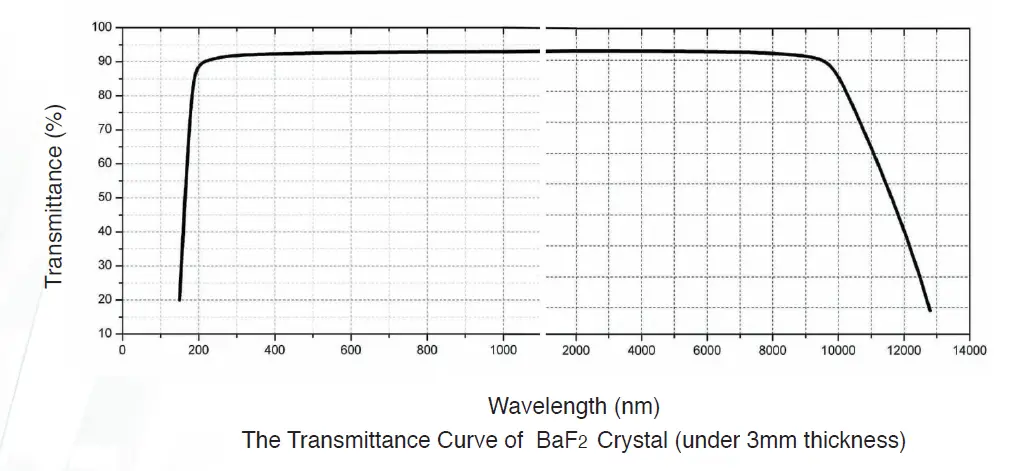BaF₂ (Barium Fluoride) is a high-performance optical material belonging to the cubic crystal system. Known for its excellent optical transmittance across a wide spectral range from UV to IR wavelengths, BaF₂ crystals are widely utilized in optical windows, lenses, and prisms. These crystals exhibit excellent radiation resistance and scintillation properties, making them highly desirable in applications like high-energy physics, nuclear medicine, and spectroscopy.
BaF₂ also demonstrates remarkable thermal and mechanical stability, which enhances its performance in demanding environments. Its high UV transmittance is particularly suited for ultraviolet spectrometry and related fields. Additionally, BaF₂ is available in both monocrystalline and polycrystalline forms, ensuring versatility for diverse applications.
BaF₂ crystals are utilized in a variety of fields due to their outstanding optical and scintillation properties:
|
Properties |
Details |
|---|---|
|
Material Grade |
VIR, UV, Scintillating Crystals |
|
Crystal Structure |
Cubic System |
|
Cleavage Plane |
(111) |
|
Density |
4.89 g/cm³ |
|
Melting Point |
1280 °C |
|
Thermal Conductivity |
11.72 W/m·K at 286 K |
|
Thermal Expansion |
18.1 × 10⁻⁶ /°C at 273 K |
|
Knoop Hardness |
82 kg/mm² |
|
Solubility |
0.0017 g @ 23 °C |
|
Young’s Modulus (E) |
53.07 GPa |
|
Shear Modulus (G) |
25.4 GPa |
|
Bulk Modulus (K) |
56.4 GPa |
|
Apparent Elastic Limit |
26.9 MPa (3900 psi) |
|
Poisson Ratio |
0.343 |
|
Properties |
Details |
|---|---|
|
Transmittance Range |
0.15 µm – 14 µm |
|
Transmittance |
>94% at 350 nm – 10.8 µm |
|
Refractive Index |
1.4624 at 2.58 µm / 1.3936 at 10.35 µm |
|
Reflection Loss |
6.8% at 2.58 µm / 5.3% at 10.35 µm |
|
Radiation Length |
20.6 mm |
|
Residual Radiation Peak |
47 nm |
|
Decay Constant |
620 ns (slow), 0.6 ns (fast) |
|
Emission Peak |
310 nm (slow), 220 nm (fast) |
|
Light Output |
20% (slow), 4% (fast) |
|
Absorption Coefficient |
3.2 × 10⁻⁴ @6 µm |
|
dn/dT |
-15.2 × 10⁻⁶ |
|
Specification |
Details |
|---|---|
|
Maximum Diameter |
Up to 300 mm |
|
Clear Aperture |
>85% |
|
Surface Quality |
20/10 |
|
Surface Flatness |
λ/4 @ 633 nm |
|
Crystal Orientation |
<111>, <100>, or custom |
|
Mount |
Upon Customer’s Specification |
Transparency Range: BaF₂ exhibits high transmittance from UV to IR, with >94% transmittance in the range of 150 nm to 10.8 µm.


| Face Dimensions (mm) | Length (mm) | Coating | SKU | Price (USD) |
|---|---|---|---|---|
| 15 x 15 | 15 | Uncoated | 7273 | 440 |
| 30 x 30 | 30 | AR (450-800 nm) | 7276 | 600 |
| 50 x 50 | 50 | AR (450-800 nm) | 31051 | 900 |
| Customization Available | On Request | As per demand | N/A | Varies |